Diabetes in cats, also known as feline diabetes, is one of the most common endocrine disorders affecting our feline companions. As an obligate carnivore, your cat’s unique metabolism makes them particularly vulnerable to high-carbohydrate diets, which can exacerbate blood glucose imbalances and insulin resistance. This comprehensive guide, drawing from veterinary expertise, explains how switching to a low-carb diet—ideally canned food under 10% carbohydrate calories—can dramatically improve management, potentially leading to remission. However, if your cat is on insulin, read the critical warning section below before making any changes to avoid life-threatening hypoglycemia.
Veterinarians like Dr. Lisa A. Pierson emphasize that no dry food is suitable for diabetic cats due to its high carb content, water depletion, and caloric density. Instead, focus on high-protein, low-fat canned options like Friskies Classic Pates or Fancy Feast classics, avoiding gravies and sauces. Home blood glucose testing is essential for safe insulin adjustments. Let’s dive into the key factors driving feline diabetes and proven strategies for control.
The Detrimental Role of Carbohydrates in Feline Diabetes
High-carbohydrate diets are like pouring gasoline on the fire of feline diabetes. Cats lack the enzymes to efficiently process carbs, as their natural prey—mice or birds—contains only 2-3% carbohydrates. Most commercial dry foods boast 35-50% carbs on a dry matter basis, spiking blood sugar and worsening insulin needs.
Studies confirm this: In one report, high-protein, low-carb diets reduced insulin requirements by over 50% in 8 of 9 cats, with one-third achieving full remission (Dr. Debra Zoran, The Carnivore Connection to Nutrition in Cats). Another study saw 68% of cats on carb-restricted canned food eliminate exogenous insulin needs (Antech Diagnostic News, 2003).
Even some canned foods with gravies exceed safe carb levels. Prescription diets like Hill’s m/d or w/d often contain 16-37% carbs, corn gluten, and plant fibers unsuitable for carnivores. Always check the Cat Food Composition chart and aim below 10% carb calories.
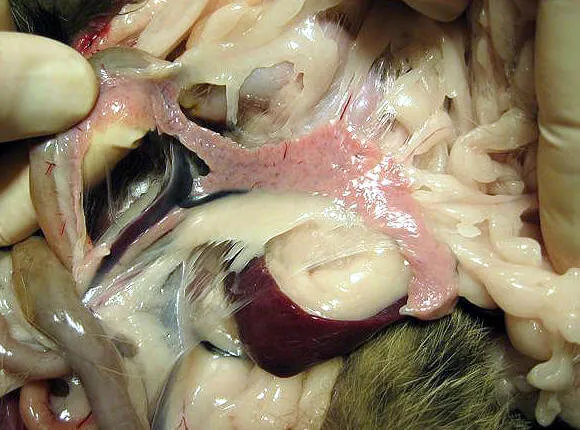 Pancreas anatomy showing the organ central to insulin production in cats
Pancreas anatomy showing the organ central to insulin production in cats
The pancreas, vital for insulin production, suffers from chronic hyperglycemia (glucose toxicity), creating a vicious cycle. Transitioning dry food addicts requires patience—see tips for gradual shifts—but prioritize hydration, as cats on canned food consume twice the water compared to dry-fed ones, reducing urinary tract risks.
Obesity and Its Link to Diabetes in Cats
Obesity fuels Type 2 feline diabetes, the most common form, through insulin resistance from adipose tissue. Fat cells secrete hormones that block insulin signaling, starving cells despite high blood glucose. Portion control is crucial, especially as low-carb commercial foods trend higher in fat (9 calories/gram vs. 4 for protein/carbs).
Weigh your cat every 2-3 months using a reliable baby scale like the American Redcross model. Unregulated diabetics may need careful calorie management to avoid dangers, as they starve at the cellular level. Exercise matters too—encourage play to boost activity.
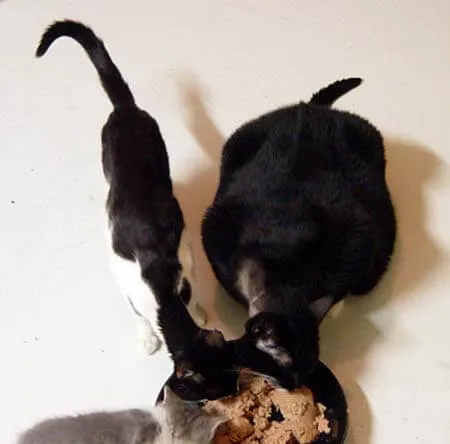 Lean cat Mindy next to obese Molly before her low-carb diet transformation
Lean cat Mindy next to obese Molly before her low-carb diet transformation
Molly dropped from 20.5 to 13 pounds on low-carb canned food, regaining mobility and grooming ability. Prevention beats treatment: Feed species-appropriate diets to all cats, not just diabetics, slashing risks of diabetes, IBD, and urinary issues.
STOP: Critical Warning for Insulin-Dependent Cats
Your cat’s life depends on this: Switching to low-carb food without reducing insulin dosage risks immediate hypoglycemia. Many diabetic cats enter remission or need far less insulin once carbs drop—effects hit within hours, not weeks.
Veterinarians often recheck too late, leading to overdoses. Home testing is non-negotiable, like driving blindfolded otherwise. Factors like prior diet carbs, sensitivity, and ketones influence adjustments—consult your vet, but insist on monitoring.
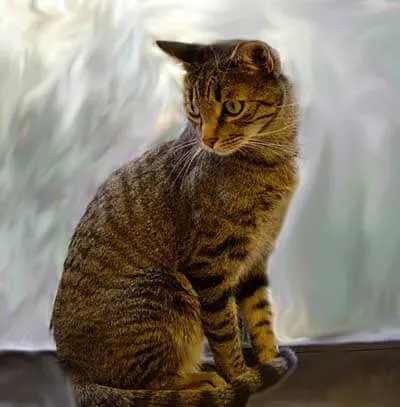 Cat Robbie perched by window, illustrating natural carnivorous design not suited for grains
Cat Robbie perched by window, illustrating natural carnivorous design not suited for grains
Understanding the Basics of Feline Diabetes
Glucose fuels cells, but insulin unlocks the door. Type 1 lacks insulin production; Type 2 adds resistance, exhausting the pancreas. Cats’ hypercarnivorous metabolism rejects carb-heavy diets, storing excess as fat and promoting resistance.
Glycemic index matters minimally—any carbs above natural levels harm diabetics. Labels hide true carb content; use dry matter calculations for accuracy.
Safely Switching to a Low-Carb Diet for Diabetic Cats
For non-insulin cats, switch cold turkey or over 2-3 days. With insulin, monitor glucose closely—many vets underestimate dose cuts. Start with 100% canned under 10% carbs; EVO or Young Again dry as temporary bridges for addicts, but not long-term due to density and dehydration risks.
Loose stools often resolve; slow for vomiters. Success stories abound on forums like Feline Diabetes Message Board—ravenous appetites aid transitions.
 Buck in sink, showcasing weight loss progress on low-carb feline diabetes management
Buck in sink, showcasing weight loss progress on low-carb feline diabetes management
In-Home Blood Glucose Monitoring: The Gold Standard
Blind insulin dosing risks death. Human glucometers (e.g., Walmart Relion Micro, 0.3µL blood) work fine—cheaper than pet-specific. Lancets (28-33 gauge) poke ear margins; ears bleed easier with practice.
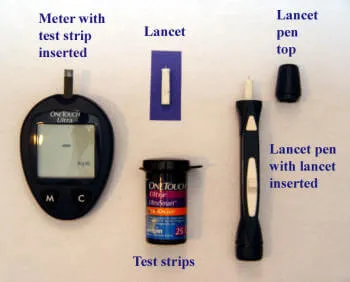 Loaded glucometer setup for testing blood glucose in cats with diabetes
Loaded glucometer setup for testing blood glucose in cats with diabetes
Warm ears, use cotton for protection, milk veins gently. Test sleepy cats behind them for calm. Initial frustration fades—Feline Diabetes Message Board offers support.
 Vein location on cat's ear for safe blood glucose testing in feline diabetes
Vein location on cat's ear for safe blood glucose testing in feline diabetes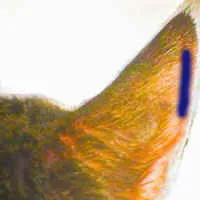 Marked target area on cat ear avoiding main vein for home glucose tests
Marked target area on cat ear avoiding main vein for home glucose tests
Kneel, minimal restraint: 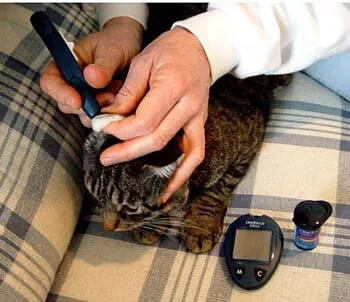 Calvin tested on couch with minimal restraint for right ear blood draw
Calvin tested on couch with minimal restraint for right ear blood draw
 Calvin's left ear test unrestrained on furniture during diabetes monitoring
Calvin's left ear test unrestrained on furniture during diabetes monitoring Gentle restraint for right ear poke in kitchen setting for cat glucose check
Gentle restraint for right ear poke in kitchen setting for cat glucose check Head-braced left ear test standing in kitchen for accurate feline diabetes readings
Head-braced left ear test standing in kitchen for accurate feline diabetes readings
Touch strip edge to drop—no scooping. Compare with vet readings.
Urine Testing for Ketones and Glucose
Monitor for ketoacidosis (DKA) from under-dosing insulin or stressors. Urine strips detect ketones/glucose, but blood testing trumps it.
Optimal Nutrition Prevents and Treats Feline Diabetes
Ditch prescription diets—overpriced, carb-laden. Prioritize muscle meat, low fiber (natural prey levels). Homemade options shine long-term.
Conclusion
Managing feline diabetes hinges on low-carb, high-protein canned diets, strict portion control, and home testing for precise insulin dosing. Remission is achievable for many with early intervention, averting complications like urinary blockages. Patience transforms dry food addicts; regular weighing and activity sustain health.
Consult your veterinarian for personalized plans, and join communities like Feline Diabetes Message Board for support. Prioritize prevention with species-appropriate nutrition—your cat deserves it. Explore more cat care guides for holistic wellness.
References
- Zoran, D. The Carnivore Connection to Nutrition in Cats. Link
- Reusch, C. WSAVA 2006: Update on Feline Diabetes Mellitus.
- Antech Diagnostic News, Dec 2003.
- Catinfo.org: Feeding Your Cat, Cat Food Chart.
- Feline Diabetes Message Board: felinediabetes.com.
Updated insights based on veterinary research as of 2025.
